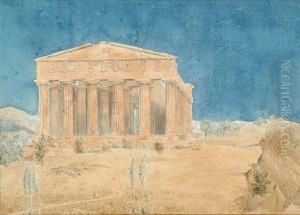Joseph Woods Paintings
Joseph Woods was an English botanist and architect, born in 1776. He developed an interest in natural history early in life, which he combined with his architectural pursuits. Woods was a contemporary of the more famous botanists of his time, such as William Jackson Hooker, and he contributed to the field through his own botanical explorations and writings.
Woods received his architectural education under the tutelage of leading architects and was known for his work in the Greek Revival style. His architectural legacy includes a number of churches and other buildings which were designed according to the principles of this style. Despite his success as an architect, Woods never abandoned his love for botany.
Throughout his life, Woods traveled extensively, including trips around Britain and to the Levant, where he collected plant specimens and studied the region’s flora. His travels resulted in the publication of the book 'Tourist's Flora, a Descriptive Catalogue of the Flowering Plants and Ferns of the British Islands, France, Germany, Switzerland, Italy, and the Italian Islands,' published in 1834, which was a significant contribution to botanical literature.
Woods was a member of the Linnean Society, a prestigious institution dedicated to the study and dissemination of information about the natural world. His work earned him respect among his peers in both botany and architecture. Joseph Woods passed away in 1864, leaving behind a legacy as a diligent and passionate student of nature, as well as a skilled practitioner of architecture.

